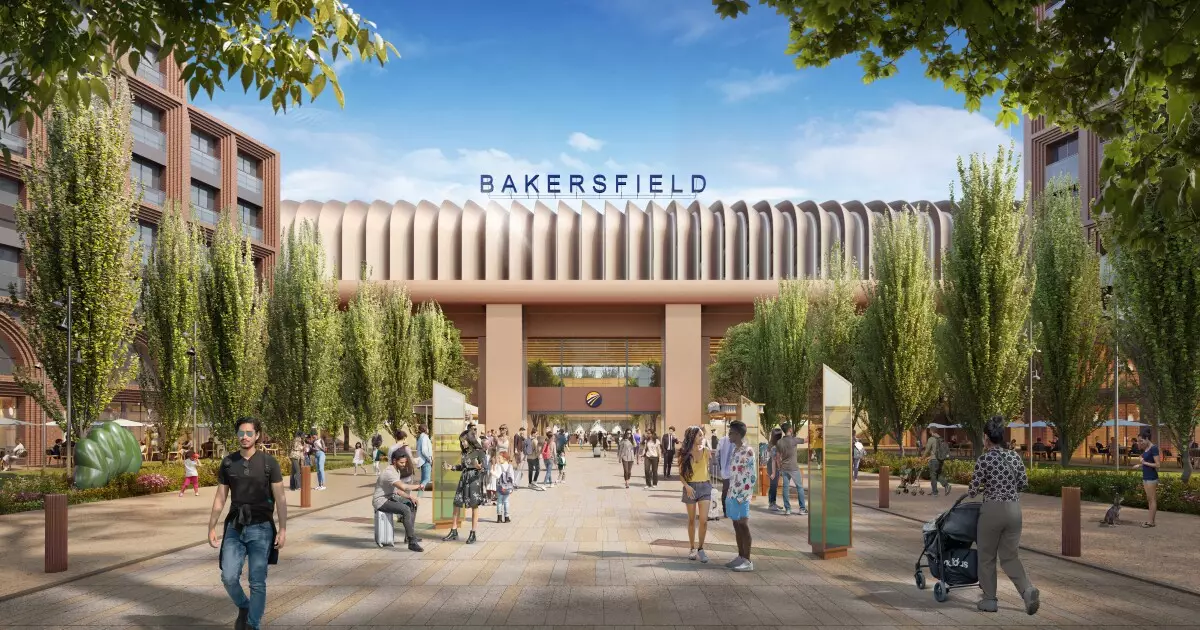The high-speed rail project in California, once viewed as a groundbreaking investment in infrastructure and technology, now stands on the precipice of failure. With an unsettling budget shortfall of $7 billion looming over the already beleaguered Central Valley segment, the vision of high-speed rail is starting to feel more like a mirage—a lofty goal that may never be realized. This project, which initially promised a transformative link between Los Angeles and San Francisco, has devolved into a symbol of government inefficiency and fiscal mismanagement.
The challenges are not merely financial grievances; they have spiraled into political tensions, drawing the ire of figures like former President Trump who have called the initiative into question. The administration’s previous attempt to rescind nearly $1 billion in federal funding revealed deep fractures in bipartisan support for the project. Now, with new leadership under President Biden, the scenario remains fraught as Secretary of Transportation Sean Duffy escalates tensions by threatening to claw back $4 billion in federal grants unless significant progress is demonstrated.
The Fiscal Tightrope
According to Helen Kerstein, a principal fiscal analyst, the California High-Speed Rail Authority’s position is precarious. The state has until June 2026 to close the $7 billion budget gap, a task complicated by rising inflation and political uncertainty regarding federal funding. In an environment where promises often dissolve into vague reassurances, such as the lackluster project update report submitted earlier this year, skepticism among Californians is not only warranted but necessary.
Demands for fiscal responsibility are sharpening as financial scrutiny intensifies. Tensions increased further after Assemblymember Alexandra Macedo introduced legislation to redirect $1 billion in cap-and-trade funding away from the high-speed rail project, diverting those resources toward more immediate needs like wildfire prevention and infrastructure enhancement. Her argument that the funds would be better utilized for urgent community needs resonates with a public growing weary of seeing its resources squandered on an over-budget, delayed, and seemingly mismanaged enterprise.
High Hopes, Higher Costs
When the project was first conceptualized in 2008, its estimated cost stood at $34 billion. Now, projections suggest that costs could soar to an eye-watering $128 billion. Such inflation reflects an inherent incompetence from a government authority that seemed overly optimistic, if not outright misleading, in its budgeting. Assemblymember Macedo’s words carry weight: “Voters have been hoodwinked by the High Speed Rail Authority’s smoke and mirrors.” This situation emphasizes a pressing need for accountability in an era when taxpayers are painfully aware of where their hard-earned money is going.
Despite having allocated approximately $13.3 billion thus far, questions loom over the efficacy of this expenditure. If oversight continues to falter, and project leaders cannot deliver a substantive plan to bridge the financial chasm, voters are justified in questioning the merits of such extravagant spending.
A Call for New Direction
Recent leadership changes, such as the appointment of Ian Choudri as the authority’s chief executive, mark an attempt to regain control of the spiraling project. His initiative to explore public-private partnerships and rethink project scope could signal a change in direction. However, this must manifest quickly to counter the existing momentum toward fiscal dissent and political scrutiny.
There exists a palpable urgency, as new fiscal budgets must be finalized before the authority can submit its comprehensive report. Without a well-articulated strategy by the time the governor signs the fiscal 2025-26 budget, the future of California’s high-speed rail project becomes increasingly jeopardized. The implications extend beyond transportation; they touch on broader questions of governmental responsibility and the need for prioritization of community concerns over grandiose projects that promise more than they can deliver.
As Californians await either a renewed vision or potential abandonment of this ambitious endeavor, the lesson remains stark: without accountability and transparency, grand ideas can become haunting liabilities.

